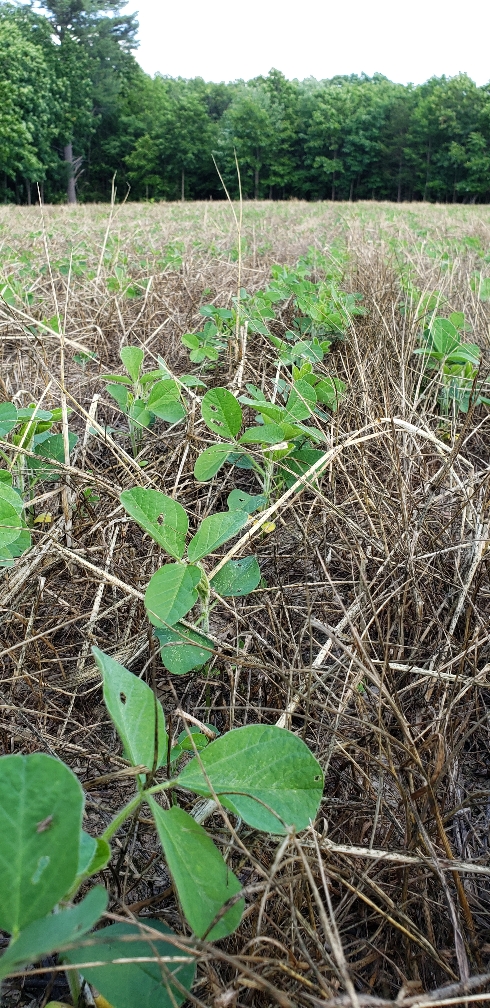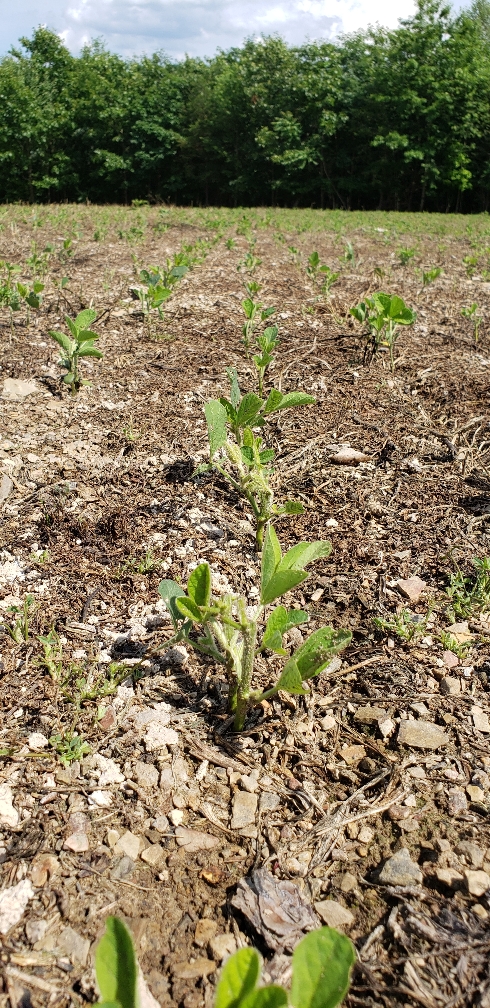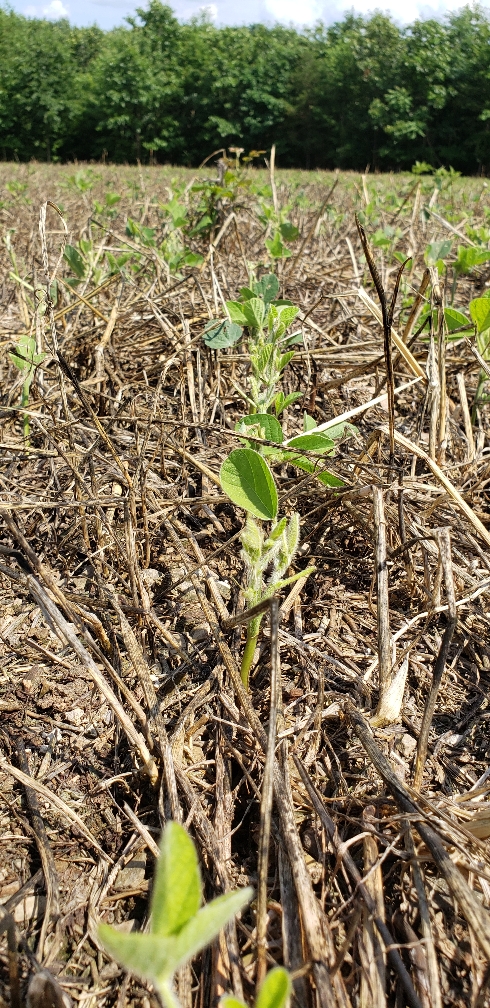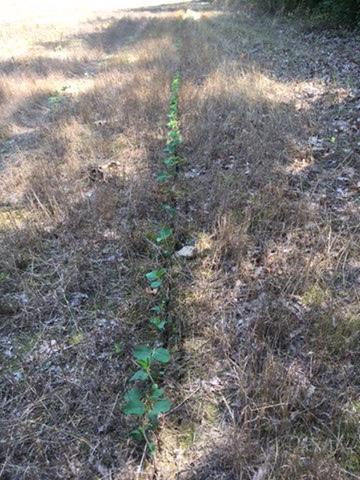Mennoniteman
Well-Known Member
Soybeans have always been a problem on small plots because deer and turkeys can easily wipe them out before they get established. I've noticed in the past that somtimes right after soybeans sprouted the ones that were growing in stubble and residue got less grazing pressure than the ones coming up in a bare dirt area, so I decided to do a test this year, and I feel that my results were pretty definitive.
I started the test last fall, taking a 2 acre field and splitting it down the middle, planting rye in one side, and brassica in the other. This spring at planting time the rye was 3' tall and had seed heads, and the brassica side was mostly bare, I then sprayed it with roundup and notilled soybeans, both sides at the same time. . The difference in deer grazing pressure is pretty drastic, the deer have large bare patches on the open side, and the beans are mostly untouched on the stubble side.
I spent some time at a distance observing the deer feeding these beans through binoculars, and they move slowly through the stubble, picking a mouthful here and there, but from their hesitant actions it appears like they dislike sticking their nose into the prickly stubble. And those plants clipped in the stubble appeared not to be cut as low, with some remaining leaves to continue growing. Once they got to the open side of the field the feeding began in earnest and from early appearances they will possibly totally wipe that side out. I have two contrasting pictures here, taken side by side, and will post more later with the final results. There's two things to consider here; number one, The method of hiding soybeans in standing rye might be an option to consider trying for those wanting to consider soybeans in smaller plots, or, maybe the deer will get wise to this method and wipe them out anyway? I should probably consider another test next year...


Sent from my SM-G965U using Tapatalk
I started the test last fall, taking a 2 acre field and splitting it down the middle, planting rye in one side, and brassica in the other. This spring at planting time the rye was 3' tall and had seed heads, and the brassica side was mostly bare, I then sprayed it with roundup and notilled soybeans, both sides at the same time. . The difference in deer grazing pressure is pretty drastic, the deer have large bare patches on the open side, and the beans are mostly untouched on the stubble side.
I spent some time at a distance observing the deer feeding these beans through binoculars, and they move slowly through the stubble, picking a mouthful here and there, but from their hesitant actions it appears like they dislike sticking their nose into the prickly stubble. And those plants clipped in the stubble appeared not to be cut as low, with some remaining leaves to continue growing. Once they got to the open side of the field the feeding began in earnest and from early appearances they will possibly totally wipe that side out. I have two contrasting pictures here, taken side by side, and will post more later with the final results. There's two things to consider here; number one, The method of hiding soybeans in standing rye might be an option to consider trying for those wanting to consider soybeans in smaller plots, or, maybe the deer will get wise to this method and wipe them out anyway? I should probably consider another test next year...


Sent from my SM-G965U using Tapatalk




